
c. 1840-50 George Washington at Trenton, American Berlin Wool Work Needlepoint Wool Textile
Similar Sale History
View More Items in Paintings
Related Paintings
More Items in American Paintings
View MoreRecommended Art
View More



Item Details
Description
Washington Related
"George Washington at Trenton" Berlin Wool Work Textile After the Oil Painting by John Trumbull Similar to Example as Dust Jacket Cover Illustrated on "Threads of History"
c. 1840-50 "George Washington at Trenton" "Berlin Wool Work" Needlepoint Wool Textile Portrait, Identified to St. Vincent's Orphan Academy, Boston, Masschusetts, Artist/maker unknown, reference "Threads of History" by Herbert Collins, published by the Smithsonian, Listed as Item 221Custom Framed, Choice Extremely Fine.
"Threads of History" by Herbert Collins, published by the Smithsonian Institution, listed as Item 221, illustrated on page 132. This item type is also illustrated in full color upon the Front Cover page of the book's original dust jacket. An exceptional, highly important original American made mid-19th Century, large size Berlin Wool Work Style Needlepoint being a Portrait of Revolutionary War General George Washington as commanding general of the Continental Army at the Battle of Trenton, New Jersey.
An exceptional Needlepoint adorned of golden wool with the legend below the portrait reading: "A Souvenir to Doctor Johnson, from the Orphans of St. Vincent's Asylum" (See more information presented online for this item, regarding the St. Vincent's Orphan Academy of Boston). This historic artwork measures 21.5" tall x 17.5" wide (by sight) being professionally matted within a decorative gold painted wood frame under archival Plexiglas fully to 28" tall x 24" wide (not examined out of frame). The embroidered textile is Berlin wool work is bright, bold and fresh in appearance, having rich colors and appears to be completely defect free. It has been well preserved as an historic treasure by its prior owners.
We have located another example of somewhat larger size of this same design located at "The George Washington University - Luther W. Brady Art Gallery - "Permanent Collection: Highlights." The Luther W. Brady Art Gallery maintains the University's permanent collection of artwork listed as follows: "Unidentified American Artist, "George Washington at Trenton" after painting by John Trumbull, mid-19th Century, Berlin Wool work cross-stitch, measuring 57" x 45" is located as part of the George Washington University Permanent Collection, Located in Gelman Library, Memorabilia Room." A handwritten note (no date) located on the back reads, in full: "Purchased Greenport, L. I. (New York) From Dave Cappel, Real Broker And Antiques. $5,500.00 - Bought 1st Hand From A University Collection." Attached to a small print image of this item having a handwritten note below which reads, in part: "St. Vincent's Academy - Est. 1832 Boston, - Sister Betty Ann, Archivist..." The previously researched information timeline and name fits this item. Our current example is museum quality, virtually perfect and ready for display.
In the 19th century, the widespread deterioration of needlework skills encouraged the proliferation of easy-to-execute embroideries, such as Berlin wool works. Their designs, which were originally published in Berlin, were copied by hand from paper patterns onto open mesh canvas or linen, and sewn by counting stitches. Berlin work was considered a visually impressive needlework skill.
We have located the following information regarding St. Vincent's Orphan Academy, Boston, Massachusetts. "ln May 1832. he brought to Boston three Daughters of Charity from the convent founded by Elizabeth Seton in Emitsburg, Maryland. These sisters established the St. Vincent Female Orphan Asylum on Purchase Street.
Although their initial duties were only to operate a free day-school for girls and to teach Sunday School for poor children. Almost immediately Fenwick sent the sisters a young girl whose father had deserted their demented mother. The bishop took her brother into his own home and asked Sister Ann Alexis Shrob, the Superior, to raise the girl, who later became a Sister of Charity. She was the first of ten thousand orphan or half-orphan (one parent deceased) girls sheltered and educated by the sisters." This was the first important Catholic response to the plight of the poor in Boston following the cholera epidemic of 1832.
The legislature incorporated the St. Vincent Female Orphan Asylum in 1843 and it sheltered one hundred girls an- nually. They were trained by six Sisters of Charity in sewing; housekeep- ing: the common school subjects: and. of course. the Catholic faith. Some girls were sent by parents or relatives to be educated by the nuns, but most came for want of better places to live and were actually orphans. When possible their families paid a modest fee. but about one-third of the girls were totally supported by the diocese. Fundraising by fairs, public subscription and bequests provided money for operating expenses, and gradually a modest endowment accumulated. St. Vincenfs admitted only pure, virginal. innocent girls aged four to sixteen from poor but respectable Catholic families of the diocese, not the petty criminals, "fallen women," or well bred young ladies other Catholic institutions attracted.
From the first, it was a lower class asylum offering homeless girls food, clothing, shelter, elementary education, "industrial training" and a safe refuge. It never assumed the character of a reformatory for wayward girls and admitted no infants or toddlers. It attracted no well-bred young ladies, nor did it employ a child saver to seek out girls in the poorhouse, jails, and streets. The girls came from priests, parents and relatives, and remained until they were old enough to leave (usually at age fourteen or later) for positions as domestic servants, seamstresses, or factory workers. Few girls were adopted."
Berlin Wool Work, as we know it today, was developed in Germany in the 19th century for the amateur stitcher, based on Hand-painted charts of Cross Stitch patterns, that were worked with a very soft wool that was spun in the city of Saxe-Gotha, located in the central German region. The wool was taken to Berlin, where it was dyed and packaged with the charts which were also printed and painted there. The first charts were released in 1804, and within the next forty years, at least 14,000 different designs were produced. When the brightly-colored wools became commercially available in 1820, it was accorded the name Berlin Work; these wools actually began to replace crewel, lambswool and silk threads that had been popular materials.
The wool was dye in brilliant colors reflecting popular German taste. In addition to the standard Cross and Tent Stitches, a new stitch called the Surrey Stitch, created a thick dimensional pile that added to the richness and reality of floral designs. As if this were not enough, some designs even called for the inclusion of colored glass beads as accent.
In 1810, a Madame Wittich of Berlin decided that better charts were needed, and she tried to interest local artists in this endeavor. The result was not only improved charts, but a return to better materials like silk and a higher grade of canvas. Herr Wittich saw the commercial value of charts that were copies of classic or popular paintings with the colors actually painted on the canvas in the squares. Artists were hired to transfer great works of art onto canvas, and encouraged to create their own floral and geometric designs. Some of these original designs were created on "point" paper and were very expensive. ("Point" paper is graph paper using 1 square = 1 inch scale.)
One of the special characteristics of Berlin Work patterns was the use of "point" paper that showed colored blocks on the paper that corresponded to the squares on the canvas. Before this, colors had been indicated by codes and patterns were printed using copper plates; the printed pattern then had to be graphed and painted by hand, which added to the cost. Now the embroiderer could follow a colored graph by counting lines, squares, and stitches on a blank canvas. A new canvas was created that had parallel threads crossing at larger intervals, and that innovation was followed by the inclusion of a blue line placed vertically at intervals of 5 or 10 threads to help the stitcher count.
Another important characteristic of Berlin Work was the type and quality of wool used. Until this time, old English and Netherlands wools, called zephers, were used in tapestries and worsted embroideries. The quality of this new wool fiber was much better and the way it accepted dye produced a much more satisfying product. The wool was softer than crewel thread, which was wiry and twisty, and strands of woven crewel thread were very difficult to separate. Because the new wool product took dye so well, more brilliant colors could be produced. In addition, the weight of the Berlin wool was designed to fit the canvas. Berlin wool was manufactured for knitting as well as embroidery.
Some German wool was brought to England in its raw state, then combed, spun and dyed in Scotland. To quote Caulfeild, "that dyed here is less perfect and durable than that imported ready for use, except those dyed in black which are cleaner in working." (Caulfeild 27). Eventually, Berlin wool was produced in Yorkshire by blending German and English wool. However, it is interesting to note that although the traditionally dynamic colors were popular with German embroiderers, English needlewomen appear to have preferred softer and more subtle colors.
Prior to 1830, Berlin Work patterns were not well known outside of Germany. German stitchers worked the patterns and some even earned small sums of money by selling their finished products. In 1831, a Mr. Wilks of Regent Street in London purchased as many good designs as he could find, as well as the patterns and working materials from Berlin and Paris. By the middle of the 19th century, Berlin Work patterns had become the favorite designs of embroiderers in both England and the United States.
In 1870, the rise of the Art and Crafts Movement in England, led by the brilliant designer William Morris and later picked up in New England, spelled the decline in popularity of Berlin Work.
"George Washington at Trenton" Berlin Wool Work Textile After the Oil Painting by John Trumbull Similar to Example as Dust Jacket Cover Illustrated on "Threads of History"
c. 1840-50 "George Washington at Trenton" "Berlin Wool Work" Needlepoint Wool Textile Portrait, Identified to St. Vincent's Orphan Academy, Boston, Masschusetts, Artist/maker unknown, reference "Threads of History" by Herbert Collins, published by the Smithsonian, Listed as Item 221Custom Framed, Choice Extremely Fine.
"Threads of History" by Herbert Collins, published by the Smithsonian Institution, listed as Item 221, illustrated on page 132. This item type is also illustrated in full color upon the Front Cover page of the book's original dust jacket. An exceptional, highly important original American made mid-19th Century, large size Berlin Wool Work Style Needlepoint being a Portrait of Revolutionary War General George Washington as commanding general of the Continental Army at the Battle of Trenton, New Jersey.
An exceptional Needlepoint adorned of golden wool with the legend below the portrait reading: "A Souvenir to Doctor Johnson, from the Orphans of St. Vincent's Asylum" (See more information presented online for this item, regarding the St. Vincent's Orphan Academy of Boston). This historic artwork measures 21.5" tall x 17.5" wide (by sight) being professionally matted within a decorative gold painted wood frame under archival Plexiglas fully to 28" tall x 24" wide (not examined out of frame). The embroidered textile is Berlin wool work is bright, bold and fresh in appearance, having rich colors and appears to be completely defect free. It has been well preserved as an historic treasure by its prior owners.
We have located another example of somewhat larger size of this same design located at "The George Washington University - Luther W. Brady Art Gallery - "Permanent Collection: Highlights." The Luther W. Brady Art Gallery maintains the University's permanent collection of artwork listed as follows: "Unidentified American Artist, "George Washington at Trenton" after painting by John Trumbull, mid-19th Century, Berlin Wool work cross-stitch, measuring 57" x 45" is located as part of the George Washington University Permanent Collection, Located in Gelman Library, Memorabilia Room." A handwritten note (no date) located on the back reads, in full: "Purchased Greenport, L. I. (New York) From Dave Cappel, Real Broker And Antiques. $5,500.00 - Bought 1st Hand From A University Collection." Attached to a small print image of this item having a handwritten note below which reads, in part: "St. Vincent's Academy - Est. 1832 Boston, - Sister Betty Ann, Archivist..." The previously researched information timeline and name fits this item. Our current example is museum quality, virtually perfect and ready for display.
In the 19th century, the widespread deterioration of needlework skills encouraged the proliferation of easy-to-execute embroideries, such as Berlin wool works. Their designs, which were originally published in Berlin, were copied by hand from paper patterns onto open mesh canvas or linen, and sewn by counting stitches. Berlin work was considered a visually impressive needlework skill.
We have located the following information regarding St. Vincent's Orphan Academy, Boston, Massachusetts. "ln May 1832. he brought to Boston three Daughters of Charity from the convent founded by Elizabeth Seton in Emitsburg, Maryland. These sisters established the St. Vincent Female Orphan Asylum on Purchase Street.
Although their initial duties were only to operate a free day-school for girls and to teach Sunday School for poor children. Almost immediately Fenwick sent the sisters a young girl whose father had deserted their demented mother. The bishop took her brother into his own home and asked Sister Ann Alexis Shrob, the Superior, to raise the girl, who later became a Sister of Charity. She was the first of ten thousand orphan or half-orphan (one parent deceased) girls sheltered and educated by the sisters." This was the first important Catholic response to the plight of the poor in Boston following the cholera epidemic of 1832.
The legislature incorporated the St. Vincent Female Orphan Asylum in 1843 and it sheltered one hundred girls an- nually. They were trained by six Sisters of Charity in sewing; housekeep- ing: the common school subjects: and. of course. the Catholic faith. Some girls were sent by parents or relatives to be educated by the nuns, but most came for want of better places to live and were actually orphans. When possible their families paid a modest fee. but about one-third of the girls were totally supported by the diocese. Fundraising by fairs, public subscription and bequests provided money for operating expenses, and gradually a modest endowment accumulated. St. Vincenfs admitted only pure, virginal. innocent girls aged four to sixteen from poor but respectable Catholic families of the diocese, not the petty criminals, "fallen women," or well bred young ladies other Catholic institutions attracted.
From the first, it was a lower class asylum offering homeless girls food, clothing, shelter, elementary education, "industrial training" and a safe refuge. It never assumed the character of a reformatory for wayward girls and admitted no infants or toddlers. It attracted no well-bred young ladies, nor did it employ a child saver to seek out girls in the poorhouse, jails, and streets. The girls came from priests, parents and relatives, and remained until they were old enough to leave (usually at age fourteen or later) for positions as domestic servants, seamstresses, or factory workers. Few girls were adopted."
Berlin Wool Work, as we know it today, was developed in Germany in the 19th century for the amateur stitcher, based on Hand-painted charts of Cross Stitch patterns, that were worked with a very soft wool that was spun in the city of Saxe-Gotha, located in the central German region. The wool was taken to Berlin, where it was dyed and packaged with the charts which were also printed and painted there. The first charts were released in 1804, and within the next forty years, at least 14,000 different designs were produced. When the brightly-colored wools became commercially available in 1820, it was accorded the name Berlin Work; these wools actually began to replace crewel, lambswool and silk threads that had been popular materials.
The wool was dye in brilliant colors reflecting popular German taste. In addition to the standard Cross and Tent Stitches, a new stitch called the Surrey Stitch, created a thick dimensional pile that added to the richness and reality of floral designs. As if this were not enough, some designs even called for the inclusion of colored glass beads as accent.
In 1810, a Madame Wittich of Berlin decided that better charts were needed, and she tried to interest local artists in this endeavor. The result was not only improved charts, but a return to better materials like silk and a higher grade of canvas. Herr Wittich saw the commercial value of charts that were copies of classic or popular paintings with the colors actually painted on the canvas in the squares. Artists were hired to transfer great works of art onto canvas, and encouraged to create their own floral and geometric designs. Some of these original designs were created on "point" paper and were very expensive. ("Point" paper is graph paper using 1 square = 1 inch scale.)
One of the special characteristics of Berlin Work patterns was the use of "point" paper that showed colored blocks on the paper that corresponded to the squares on the canvas. Before this, colors had been indicated by codes and patterns were printed using copper plates; the printed pattern then had to be graphed and painted by hand, which added to the cost. Now the embroiderer could follow a colored graph by counting lines, squares, and stitches on a blank canvas. A new canvas was created that had parallel threads crossing at larger intervals, and that innovation was followed by the inclusion of a blue line placed vertically at intervals of 5 or 10 threads to help the stitcher count.
Another important characteristic of Berlin Work was the type and quality of wool used. Until this time, old English and Netherlands wools, called zephers, were used in tapestries and worsted embroideries. The quality of this new wool fiber was much better and the way it accepted dye produced a much more satisfying product. The wool was softer than crewel thread, which was wiry and twisty, and strands of woven crewel thread were very difficult to separate. Because the new wool product took dye so well, more brilliant colors could be produced. In addition, the weight of the Berlin wool was designed to fit the canvas. Berlin wool was manufactured for knitting as well as embroidery.
Some German wool was brought to England in its raw state, then combed, spun and dyed in Scotland. To quote Caulfeild, "that dyed here is less perfect and durable than that imported ready for use, except those dyed in black which are cleaner in working." (Caulfeild 27). Eventually, Berlin wool was produced in Yorkshire by blending German and English wool. However, it is interesting to note that although the traditionally dynamic colors were popular with German embroiderers, English needlewomen appear to have preferred softer and more subtle colors.
Prior to 1830, Berlin Work patterns were not well known outside of Germany. German stitchers worked the patterns and some even earned small sums of money by selling their finished products. In 1831, a Mr. Wilks of Regent Street in London purchased as many good designs as he could find, as well as the patterns and working materials from Berlin and Paris. By the middle of the 19th century, Berlin Work patterns had become the favorite designs of embroiderers in both England and the United States.
In 1870, the rise of the Art and Crafts Movement in England, led by the brilliant designer William Morris and later picked up in New England, spelled the decline in popularity of Berlin Work.
Buyer's Premium
- 30%
c. 1840-50 George Washington at Trenton, American Berlin Wool Work Needlepoint Wool Textile
Estimate $5,000 - $6,000
1 bidder is watching this item.
Get approved to bid.
Shipping & Pickup Options
Item located in Rancho Santa Fe, CA, usOffers In-House Shipping
Payment
Accepts seamless payments through LiveAuctioneers

TOP
























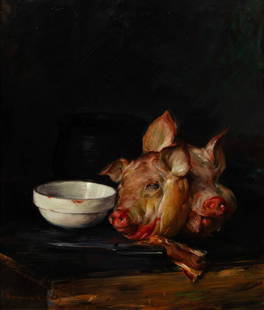












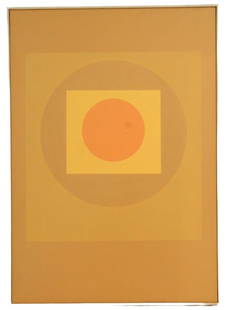
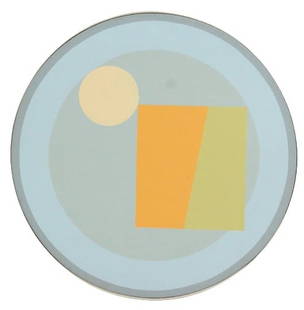
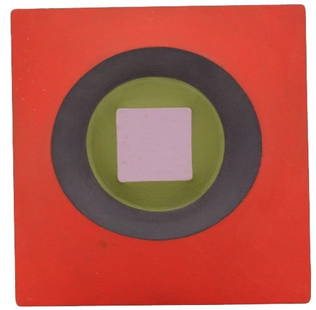
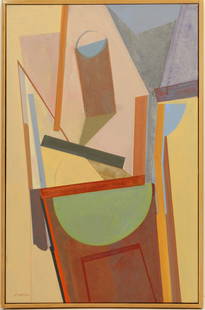


























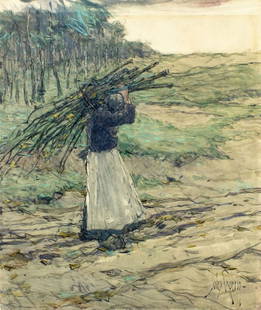

![Emilio Grau-Sala "Sur la Plage" Oil on Canvas: Emilio Grau-Sala (Spanish, 1911-1975), "Sur la Plage" [On The Beach], Oil on Canvas, 1958, signed "Grau Sala" lower right, signed, inscribed "Trouville", dated, and titled to verso. Image: 21.5" H x 2](https://p1.liveauctioneers.com/5649/328023/176731071_1_x.jpg?height=310&quality=70&version=1714409606)













